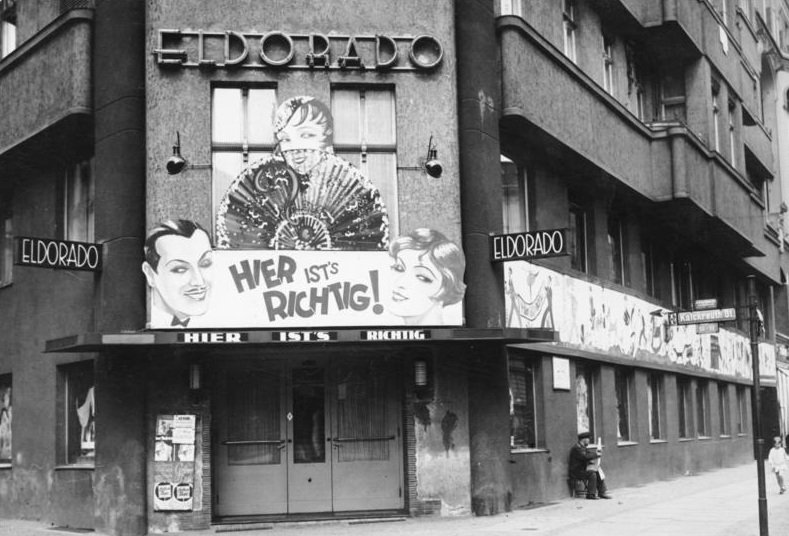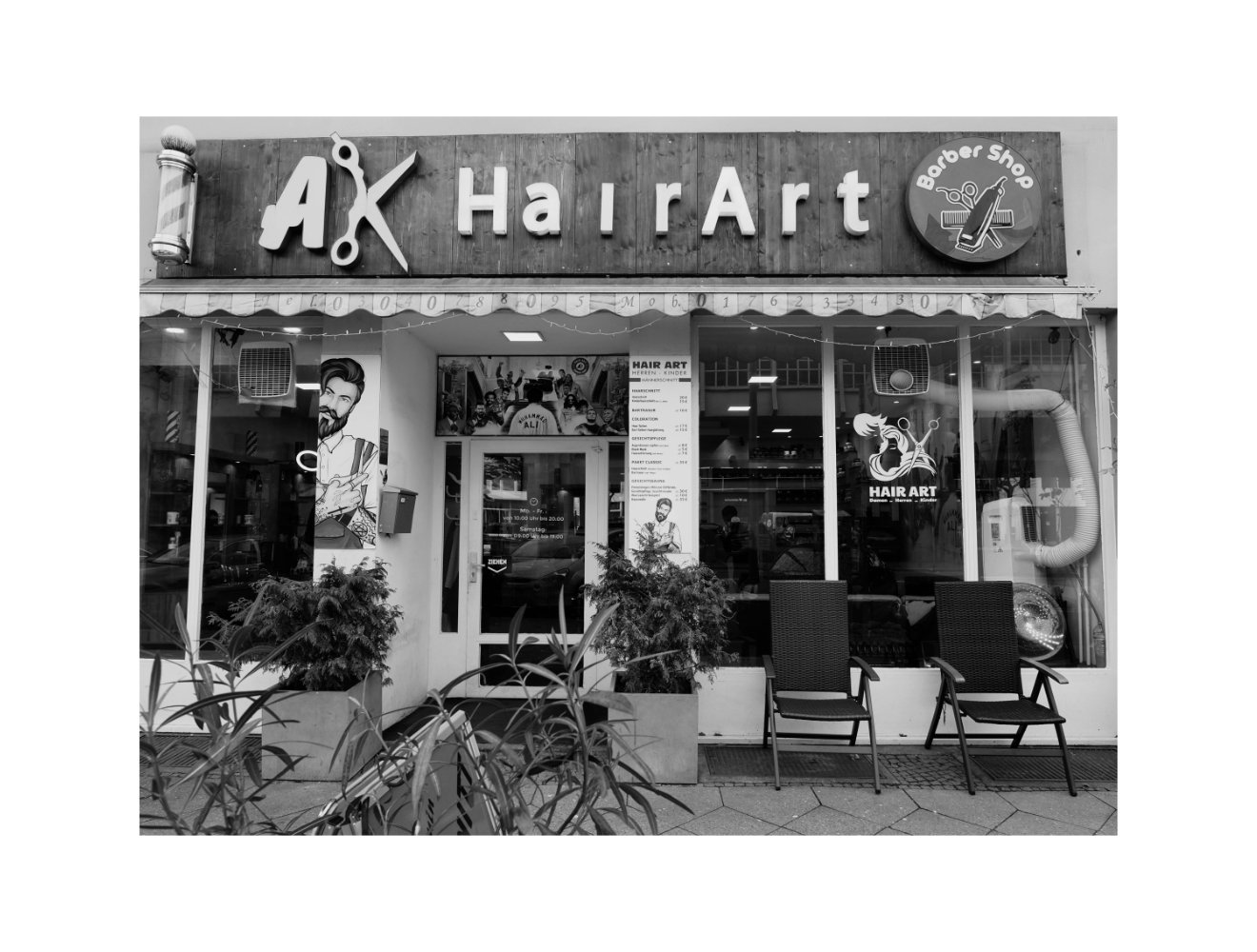How Berlin’s lost queer bars look today: Exploring Weimar Berlin with Dr. Finn Ballard
I hit upon the idea of mapping out some of Berlin’s lost Weimar-era queer bars when reading a reprint of a 1931-guide to nightlife in Berlin. I ended up making a video about it with excellent fellow guide, Dr. Finn Ballard, as well as creating a photo series of how the bars’ locations look below.
You’ll also find a map in this article so you can explore Schöneberg for yourself, including a few extra interesting sights that still exist today.
If you enjoy this article please consider booking Finn for a tour of Queer history in Berlin, or following me across the web. Let’s go!
Weimar Berlin, or Babylon Berlin?
Babylon Berlin has reignited interest in Berlin’s hedonistic Weimar heyday
The TV show Babylon Berlin, one of if not the most expensive TV shows made in Germany, has been something of a hit here and across the world. Stories of sex, crime, music, politics, violence and glamour set against the backdrop of a society that we, if perhaps not the characters, know is doomed.
One of the show’s ‘characters’ is the Moka Efti club, which serves as an amalgam of several different super-club entertainment centres that excited back in Berlin’s wild Weimar years (1919-1932). Watching the show prompted me to find out where more of these exciting bars and clubs were, so I picked up a reprint of Curt Moreck’s ‘Ein Führer durch das lasterhafte Berlin’ (A Guide Through the Debauched Berlin).
Berlin Guide & Historian, Dr. Finn Ballard
Originally published in 1931, Curt Moreck’s book leads readers through a curated account of Berlin’s cutting edge nightlife. He describes walking the streets through the touristy cabaret scene, and gives tips as to which bars and clubs are only for men, only for women, or catering to other delights.
Moreck also describes the legendary Eldorado, with its famous tagline: “Here it’s alright”, meaning here, anything goes. It describes a jovial atmosphere, with men dressed in women’s clothes, jazz playing, everyone being welcome men, women, and everyone else. As Finn says in our video, “drag queens and their admirers”. Of course, in ‘20s and ‘30s Berlin, this means Nazis as well.
The legendary Eldorado in Berlin Schöneberg
Bundesarchiv, Bild 183-1983-0121-500 / CC-BY-SA 3.0, CC BY-SA 3.0 DE, via Wikimedia Commons
Exploring Schöneberg with Finn Ballard
Inspired by Moreck’s book, I wanted to go for a walk and see what’s left of Berlin’s legendary nightlife. Of course, I’m lucky enough to have known Finn for many years, so I asked him if he’d like to join and even tell me about few places we could visit.
While we were preparing our route we discovered this wonderful map from the Rosa Winkel AG (Pink Triangle Foundation) that shows the location of 57 of Schöneberg’s queer-friendly bars, alongside a short explanation of the bar’s clientele and, amazingly, the names of the owners - names that would have otherwise been lost to history!
Legendary Weimar Berlin performer Anita Berber, who’s had a show titled
"Dances of Depravity, Horror, and Ecstasy"
Rosa Winkel’s goal was in fact to look beyond the Weimar period, and into the queer locations that somehow managed to stay open, move, or open anew in the 12 years of Hitler’s dictatorship. As a result, our walk broadened its scope a little, potentially covering places that were open after the Nazi’s rise to power.
So, on a chilly February morning we set off on our bar crawl with no bars to talk history and take photos!
Book Finn for a Queer Berlin tour
For years now, Finn has been offering tours of Berlin’s queer culture. You can get in touch with him for a tour on his website.
If you haven’t already, make sure to check out the video at the top of this article. If you want to lead yourself on a walk through Weimar Berlin then check out the map I’ve made and the photos I took below.
Explore Schöneberg’s queer nightlife history with this map
How Berlin’s lost queer bars look today
1. Kleist Kasino
A regular-looking pub popular with gay men. Privacy screens were available. One of the earliest gay bars to open in the area, opening in 1921.
Notorious Nazi SA Leader, Ernst Röhm, was known to hang out here.
Open 1921-1933.
Imagine my delight when I saw there was a ‘Johnny’s Night Club!’
2. Johnny’s Night Club
I just had to include this one, right? According to Moreck, Johnny’s Night Club was very popular with a rich and elegant crowd, who’s fancy cars would often be parked out front.
Open 1929-1935.
3. Miramare / Auluka / Geisha
What started as a bar for “elite men” in 1922 would become one of the city’s most well-known and respected lesbian bars, Geisha, by the end of the ‘20s. It would be forced to close in 1933.
Open 1922-1933.
4. Eldorado (original)
The Eldorado was such a success that a new and ultimately more famous incarnation opened around the corner. This version lasted from 1927-1931.
I’m not sure this location is 100% correct, it may have been next door, but this photo was nicer.
Open 1927-1931.
5. Motz-Diele / Amazonen-Diele
Two short-lived locations. The Motz-Diele seems to have been a bar for sportsmen in 1920-21, which was then replaced by Amazonen-Diele between 1921 and 1922, catering to high society lesbians.
6. Eldorado
“Here everything’s alright” as they would say, or “everything the Nazis hate” as Netflix would have it. Probably the most famous Weimar-era cabaret bar to have existed in Berlin. Popular with locals, tourists, drag queens, transvestites (as they were then called) and seemingly just about everyone. Tragically shut down by the Nazis and adorned with Swastikas shortly after they came to power.
Open from 1931-1933
7. La Garçonne / Jolly Joker
Lesbian bar. Men could only enter if accompanied by women. Wild & wonderful performer Anita Berber was known to have performed here.
Open 1931.
1932 saw the opening and closing of the Jolly Joker in the same location.
8. Olala / Zieten
Lesbian bar for well-to-do women. Originally opened by Gertrud Krantz in 1922. In 1931 Annaliese Meier took over, changing the name to Zieten in 1935, the same year this brave lady banned SA members from entering.
Open 1922-1935.
9. Monmartre im Toppkeller
Famous for BDSM/Sado-masochism nights. Nominally a lesbian club, but enjoyed by men, too. If they could get in past the dominatrix on the door, that is.
Open 1928-1931.
10. Holländische Diele
Popular with internationals. Amazingly open until 1943.
Open 1921-1943.
11. Merkur
Dance- and coffee-house open for a short time at the beginning of the 1920s. Bizarrely it neighboured a dairy that was fully functioning (cows and all) until the 1970s.
I like to imagine that the cows weren’t great for business.
Open 1921-1922.
12. Oase
A dance club for lesbians, calling itself the cosiest place for ‘girlfriends’. Open from 1929-1932.
13. The Dorian Gray
Inspired by legendary wit and gay man, Oscar Wilde. A meeting place for both men and women of ‘alternative’ persuasions and interests. Especially popular with internationals as an English-speaking venue. Open from 1920-1933.
14. Sport Casino / Fimbria Casino
Described by Rosa Winkel AG as the “most elegant meeting place in the West”! A gay bar.
Open 1920-1927.
Bonus sights to explore on your walk
Always the tour guide, as I walked the route shown in the map above, I spied some extra sights I think you’ll enjoy
One of Berlin’s many stunning Brick Expressionist buildings
The Long Distance Phone Exchange
Cutting edge tech of the 1920’s in beautiful brick expressionist form. This building served as the telephone exchange for the German postal service.
Where Christopher Isherwood lived in Berlin
Christopher Isherwood’s House
Christopher Isherwood, an English novelist and playwright, best known for his semi-autobiographical work "Goodbye to Berlin" (1939), which vividly depicts the social atmosphere of Weimar Berlin in the early 1930s. Through his keen observations and personal experiences, Isherwood's writings provide a crucial insight into the vibrant and tumultuous life of Berlin before the rise of Nazism, highlighting the city's cultural dynamism, sexual freedom, and political unrest. Goodbye to Berlin was the inspiration for the hit musical Cabaret.
Does Berlin’s Weimar spirit live on in Berghain?
Portrait of Sven Marquardt by Vhils
If Weimar decadence was typified by the bars and clubs of Schöneberg, then Berghain is certainly the modern day equivalent. Though Berghain is located further afield, this portrait of its infamous bouncer, Sven Marquardt graces a huge wall in Schöneberg.
The artist, Vhils, created it using little explosives in what was actually a marketing stunt for Levi’s jeans.
Walter Degen was among the countless thousands of gay men imprisoned by the Nazis and forced to wear a pink triangle on his uniform
Walter Degen by Nils Westergard
Walter Degen was imprisoned for the Nazi’s for his homosexuality. Here, his portrait bears the pink triangle that gay men were forced to wear in the concentration camps.
One of Berlin’s hidden gems: The Kleine Grosz Museum
The Kleine Grosz Museum
See the artworks of legendary Weimar Berlin Dada artist and satirist Georg Grosz in a glorious award-winning building that once served as a West Berlin petrol station. The collection includes paintings, collages, and selected magazine appearances among other artefacts. Works include those made in Berlin as well as from his time in the USA, where he fled when Hitler came to power.
Enjoyed this walk? Consider leaving a Google Review
5-Star Google reviews help me grow my business. A free review in exchange for free content sounds like a good deal to me, so if you’d be kind enough to hit the button below and write a review I would be very grateful.
Explore more of Berlin!
Check out this map, where I’ve pinpointed the location of (most of) my videos. Watch them at home or take the map on the go to explore by yourself, or click the button below to book a tour.






















































